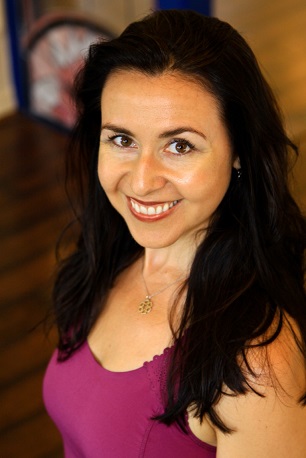Resolutions, Goals, Intentions, and Objectives – by Marie Wittman, PhD
We are several weeks deep into the new year now and that means it has been many days since the minds of many were bursting with excitement for a new year in which they would (finally) stick to their health resolutions. Or was it their health goals? Perhaps their health intentions? Whatever term your client has chosen to label their plan for health changes this year, you can help them stay on track through the many diversions and seemingly blocked paths that life always entails. I have made a little list outlining how I approach progressing with Pilates throughout the year.
- Begin the conversation. If you do not already know what their goals are, ask your client at their next session. If you do know what their goals are, brainstorm ways to tailor their sessions to be working toward their goal before the next one. I also restart the conversation every quarter as priorities change all the time and I think it is important to be reassess objectives throughout the year, not just January 1st.
- Refine and define goals. If their objectives are a bit vague, like weight loss, tease out whether it is weight loss or a change in body composition. Pilates is much better suited to addressing body composition; in fact, it is through all the control and precision aspects in Pilates that this method excels above and beyond many other exercise methods. Pilates will improve muscle tissue function and build more muscle, therefore providing the change in body composition and, depending on the individual, weight loss along with that.
- Record everything. Document each client’s goals, timeframes, and means of measurement or assessment. If changing body composition is the goal, a photo (rather than a number on the scale) is a good document. If your client’s goal is increasing walking mileage or preparing for a hiking trip, they can easily track that with an app on their phone, and you can periodically check in with them. But you can also inquire on how they feel when they walk. Feedback such as less fatigue when walking will indicate muscle growth to some degree and reflect on the work you are doing in the studio to progress them toward their goals.
- Do your homework. Do some research on the goal, or on the human body in general, to expand your knowledge while working with your clients on their goals. If being physically prepared for that upcoming hiking/rock climbing trip was a goal, how would you gradually and progressively improve their physical fitness in the studio?
- Give homework. The body adapts to the sum total of our movement, so what our clients do outside of the studio is extremely important. Even doing Pilates four times a week is not sufficient for physical adaptations if the rest of your client’s waking hours are spent mostly sedentary. Desk jobs are the norm these days and most people sit during their commute to work and at the end of their days when unwinding from work. Providing my clients with suggestions on lifestyle changes that will help integrate movement into their day is, in my opinion, one of my most important responsibilities in teaching Pilates. For example, I often encourage my clients to transition to a dynamic workstation. Switching between standing, sitting, and even squatting throughout a day’s work can make a huge impact on health. To enliven their standing time, I teach a little Standing Side Kick Series to spice up their activity during work.
- Assess every month. It is also important that we as teachers stay focused on what our clients’ goals are. It is easy to get distracted due to excitement following a workshop or to start implementing new exercises to advance them to the next level in Pilates. Sometimes this may not be furthering a client’s progress toward their goal. That doesn’t mean you can’t experiment with new exercises and see how you might incorporate them into any given client’s personal goals. Simply assessing our “lesson plans” each month will help us stay focused on our clients’ progress as well.
- Document progress at the 3-month markers. Wherever you recorded your clients’ goals and any assessments (photos or notes in a folder, for example), take a note of any and all progress achieved over the last three months, such as:
- Ease of doing Footwork on more springs
- Learning another exercise on the Wunda Chair
- Pair of jeans fitting without any snugness
- Walking more miles every day
- Feeling more energetic in general
Acknowledging these changes along the way to a bigger goal helps us all realize the steps in between and helps our clients see how their investments (time and money) in Pilates are paying off.
- Share your goals for your client’s Pilates progress as well. I always have various goals for my clients when I start working with them. I might notice a compensation pattern when they do Footwork, or that their shoulder pain is rooted in their pelvis and ribcage alignment. While I do not always tell them all the nuances of my teaching plan, I do let them know what I am working toward in their sessions.
In most cases, the Pilates-related objectives that I have for my clients tie into the goals that they shared with me. However, if my goals were to be totally off base from theirs, I would probably reassess mine. For example, moving from beginner/Level 1 to intermediate/Level 2/3 is fairly fundamental to our teaching. Yet, there are clients who don’t come regularly or who come only once a week and it is usually impossible to safely progress them through the levels. It is with such clients that I need use this goal setting approach all the more. For my wish to see them twice a week is evidently not in alignment with whatever it is that motivates them to come into the studio less frequently. So I start a conversation about what their goals are in coming to Pilates and I tailor my teaching to meet those goals. This approach has resulted in a few surprises. Clients that I thought were not all that interested in Pilates were in fact extremely happy with a little bit of movement in their once per week session. I’ve also found that some clients were not really aware that two sessions a week would help them achieve whatever fitness goals they had.
How have you approached clients’ health goals? What approaches have you found to work well? I’d love to hear from you on the Pilates Intel Facebook page.
 Marie Wittman is a Master Pilates Teacher, a Merciér Therapy Practitioner, and she holds a PhD in medical history from Queen Mary, University of London. She founded Art and Science of Balance as a platform for educating the public about aligned movement and for providing unique continuing education to Pilates instructors. She teaches and writes about all aspects of optimal health, but her speciality is movement and women’s reproductive health.
Marie Wittman is a Master Pilates Teacher, a Merciér Therapy Practitioner, and she holds a PhD in medical history from Queen Mary, University of London. She founded Art and Science of Balance as a platform for educating the public about aligned movement and for providing unique continuing education to Pilates instructors. She teaches and writes about all aspects of optimal health, but her speciality is movement and women’s reproductive health.
